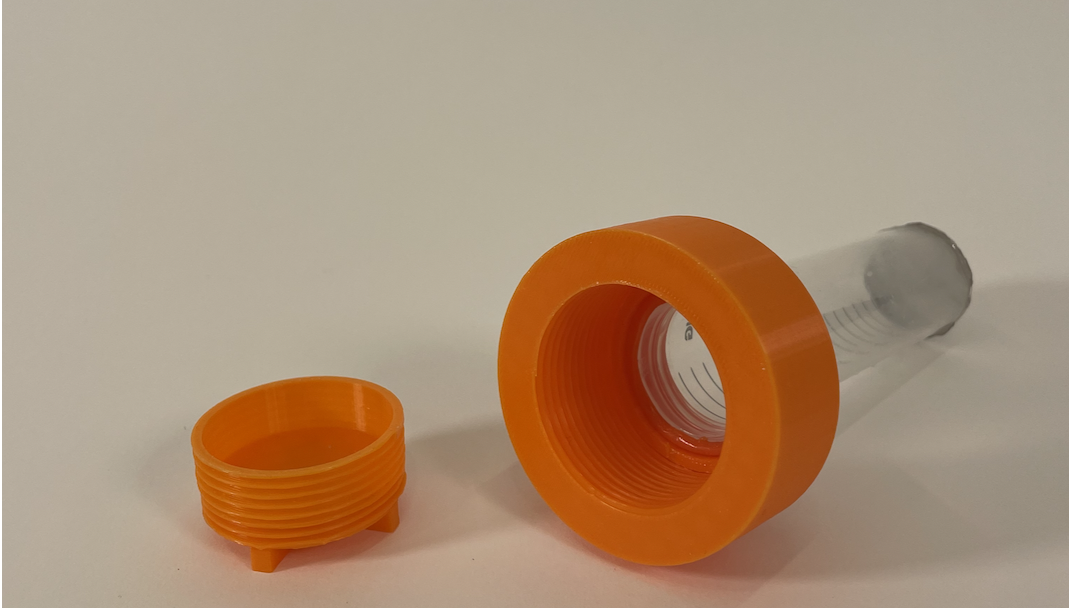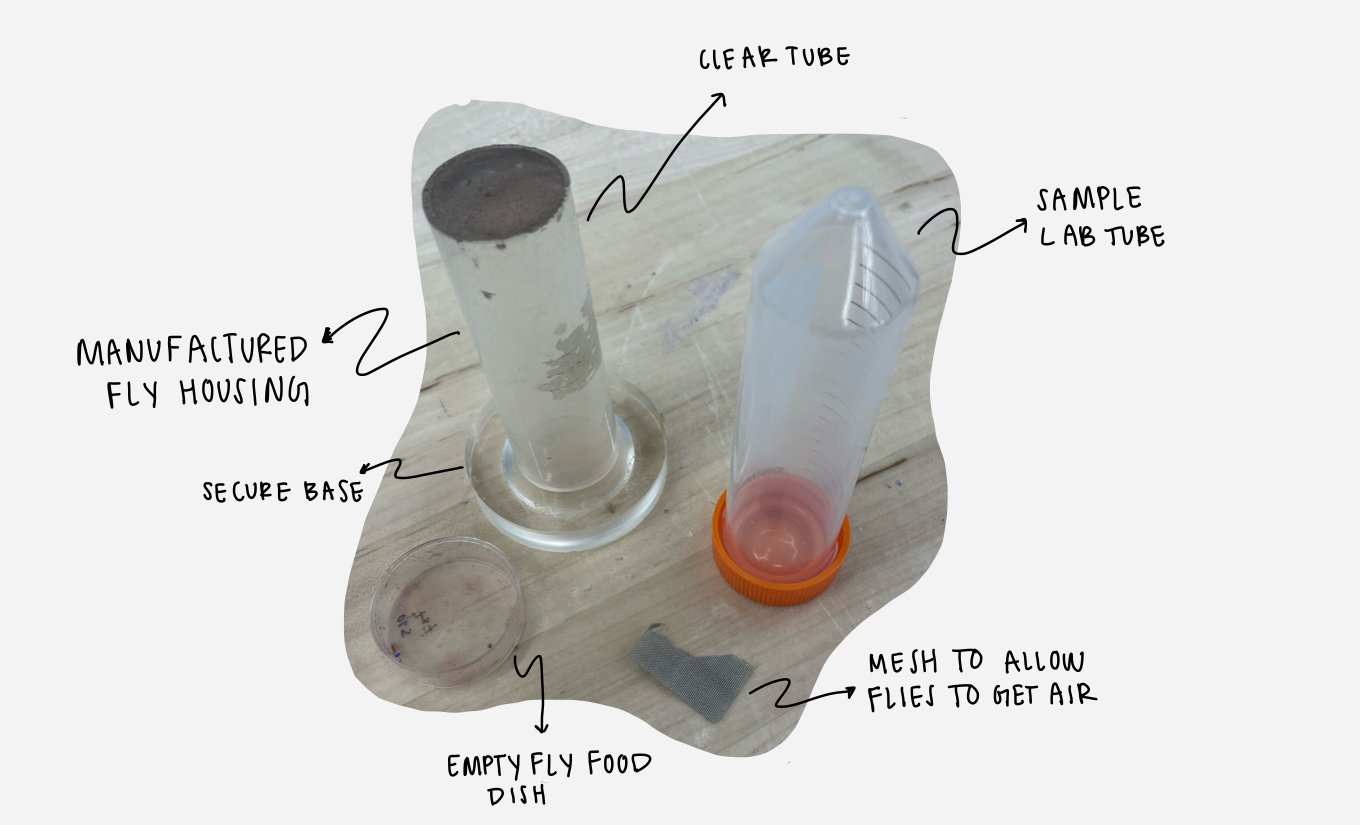
Fly Cages
For research in Duke University Fly Labs
Fall 2024
Duke University Fly Labs
Skills
CAD, 3D printing, fabrication
Researchers at the Duke Fly Labs use fly cages to house flies and encourage mating. The cages consist of a transparent tube attached to a small food disk. The researchers must securely attach the food disks to the tubes to prevent flies from escaping. The lab has a few expensive manufactured tubes, but otherwise, the researchers use tape to attach the food disks.
Project Overview
The lab designs and performs experiments to learn about how the nervous system turns on for the first time during development using fruit flies as an experimental system.
Client Conversation
Fly Escape:
Current solution is not secure enough, leading to occasional fly escapes during experiments.
Fly Visibility:
Transparency is crucial for monitoring the flies and ensuring the experimental conditions are visible.
Portability:
The device needs to be mobile for daily setup and movement between experimental stages.
➔
Design Considerations
The design must incorporate a reliable fastening mechanism that prevents the flies from escaping, such as a tight-fitting cap or a secure locking system.
Using a clear, durable material such as acrylic or polycarbonate ensures visibility for monitoring the flies.
The design should be lightweight and compact
Ideation
Using the manufactured tube as inspiration, I sketched a base for the sample lab tubes. The base had two parts: a wide cylinder that was attached to the lab tube and a cap that housed the fly food. The cap screws into the bottom of the base. I chose this design to ensure that the fly tube setup was stable and portable.
Prototyping
I wanted to make the base modular so that the clear tubes could be easily replaced. I attempted to match the threads on the tubes to Solidworks threads but eventually chose to cut out the center part of the orange caps and attach them to the top of the base.
Threads are hard! This took around 30 iterations to master. I experimented with make the base shorter, then taller, then wider, then thinner… you get the picture.
Redesign
The clients took the finished prototype to their lab to try it out. They found that the cap took too much time to unscrew, allowing flies to escape! Back to the drawing board.
The new design used four tabs to hold the dish in place. The dish can be easily removed by sliding the tabs to the side. The tabs are attached using threaded inserts and screws.
Manufacturing
Once satisfied with the design, the client requested 15 fly tube set ups to use in their lab. I got to work sawing off the top of the lab tubes, securing mesh to the top of the tubes using a heat gun, and attaching the tubes to the 3D printed bases.
Use in the Lab + Impact on Research
The Carreira-Rosario Lab studies how the nervous system of an animal becomes active for the first time during development using Drosophila (fruit flies) as a model system. An essential part of our research is performing fluorescent imaging of fly embryos to monitor their neural activity as development progresses.
“To get fly embryos, we collect fertilized eggs from parents that carry specific genes of interest. The fly cages allow us to house the parents and attach an agar cap – the flies lay eggs on the cap which we can easily remove to collect the eggs.”










